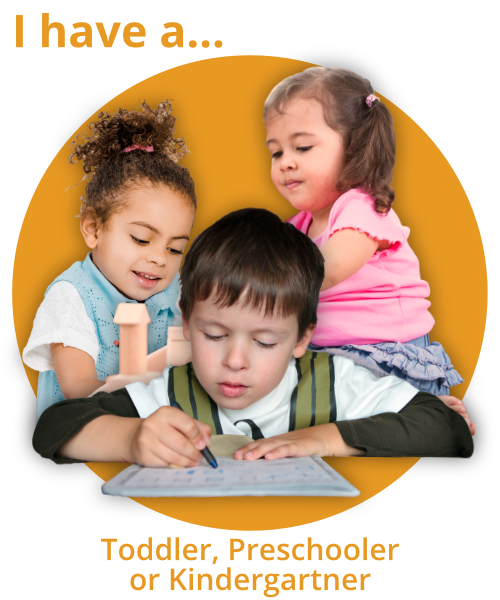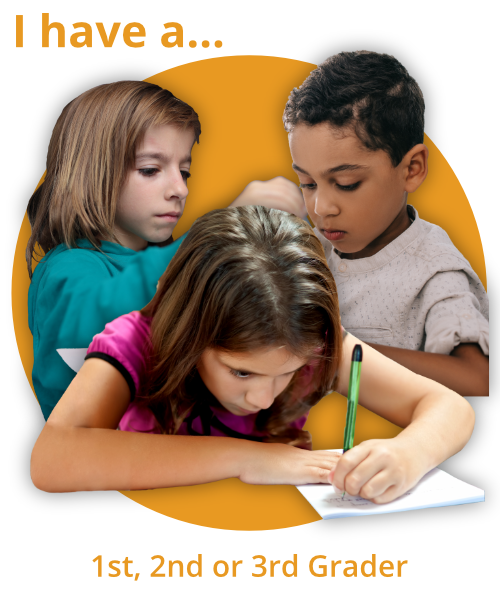Your Montessori Living Room
I'm Aubrey Hargis, Montessorian and mom of two. I believe that the best part of creating a Montessori home is the way it adapts and evolves with the needs of the entire family. Our home has never looked like a model home, but it suits us. And I'm still rearranging it for continued homeschool success with my kids. Because education is a journey we take with our children, and the opportunities for learning start over every day.
Hey Sweet Friend
We are in the middle of a series about preparing your home for homeschooling and just regular old Montessori parenting. If you want to go back and start this series from the beginning, we've talked about taking inspiration from the one-room schoolhouse, about making your kitchen a classroom, and about the ICONIC dining room or kitchen table. Today, our topic is the quintessential Montessori playroom, which if you have been anywhere near social media, you may already have an image in your head of what it is “supposed to” look like, but today we are getting raw and real. I'm going to talk to you about my own experiences, shifting from thinking of myself as just a stay-at-home mom into thinking of myself as a home educator of my children, and what I did to my own house to change it up and prepare it for that experience.
For those of you who have been at Montessori for a long time, I can tell you that it is a method of education and a way of life that I just can never seem to learn enough about. I don't think I'm ever going to get to expert status...I just don't think that there is such a thing. There's always something that you can do to go deeper into the philosophy. If you look at the same kind of theoretical concepts with a different perspective or with your children at a slightly different age, you see things in a whole new light.
I didn't always feel the same way that I feel now. I used to complain about this on my very first blog, I would write very passionately about a certain point of view about Montessori or a certain feeling. Then, a couple of years later, people would be reading the blog posts, and they would write to me and they'd be like, wow, you think this? And I’d think “Actually, my feelings have changed slightly because my kids are a little bit older, and I've thought about this topic just in a different way.
I'm currently teaching a course called Homeschool of the Redwoods-Primary. We are also about to jump into a nine-month journey into the Lower Elementary program. So whether you've got a child who is just about to turn 2 or you have a child who is just about to turn six, there is a curriculum-focused program for you to learn Montessori at home.
Meet Michelle!
Meet Michelle, Montessori mom of three, living in California, USA. She’s an alumna of Homeschool of the Redwoods Primary AND Lower Elementary and a member of Constellation. We are featuring members like Michelle so you can get a sense of what it’s like to belong to the Montessori homeschooling community! You can read more about Michelle here.
Montessori’s Most Well-Known Environment
The playroom or living room is probably the environment that you see the most often online. If you look up Montessori, you're going to come across a lot of stuff. I can even tell you what it looks like! I'm closing my eyes. I'm envisioning the perfect social media Montessori space: It has white walls, it has little pictures on the wall that are hung low. It has a shelf, the shelf is white. There are little baskets on each little shelf. Maybe it's a cube shelf or a low long shelf, but there are little baskets and trays and little pretty colorful works inside. There's a plant on top of the shelf, and there's a little lamp to bring some soft lighting into the room. There is a container next to the shelf and it has rugs inside, just a couple of little rugs that you might unroll and put in front of the shelf to put your work on, to designate the area where your work goes.
If I were to see a child in this room, I might see a child at a little table that's just the right height for the child, and the child is in a small chair. The child will be doing one of the little works that are on the shelf, maybe that is on a tray. Overall the room is peaceful. There's a little bookcase right there in the corner and it's a front-facing bookcase because the parent who created this lovely environment wanted the books to be facing out rather than lined up on the shelf. They chose it this way so that the child would be drawn to the covers and titles of the books, instead of ignoring them because they'd all be just facing with the spines out where you can't see the pictures or be enticed by them. You might go over there and there's a little rug underneath that shelf. You might want to go over and pick up a book and sit on that rug and read or maybe there's a little chair next to it. I remember this from my Montessori toddler classroom days, where I created this little reading nook just like those.
Do you see the space in your mind? Have you seen a Montessori playroom just like this?
It's optional. It's optional, friends. You can create those if you want for your child, and it can be really fun. But it doesn’t have to be a Pinterest-perfect, Instagram envy-inducing space. I'm going to boil it down for you, and be very, very real.
A Realistic Approach
The living room can be your regular, shared, family living room. It doesn't have to be a designated or child only space in your home. It can just be the environment where you hang out naturally as a family; maybe your TV is in there, maybe you have a couch or recliner, maybe you all gather around the coffee table and play games together. Maybe you lay on that couch all the time, and there's always a big pile of laundry there because it's where you do laundry, and maybe you've got a baby and you've got a big stack of diapers, and just all kinds of stuff hanging out. Your living room does not have to fit that pristine, catalog-worthy environment.
If you have the extra inclination and maybe some money to want to bring in a new type of environment for your child into that existing space, then it's pretty simple. Find a place to put a low shelf. It can be a cube shelf from IKEA; these are pretty affordable and nice and low if you put them on their side, though it can be hard to squeeze larger work into the cubes. I found one of my very favorite child-sized shelves on Craigslist. You can get great shelves from thrift stores and garage sales. You could use an entertainment center or an end table. You could use the hearth of your fireplace. You could make a shelf from wooden boards and cinder blocks, or even cardboard boxes. Whatever type of shelf you find is going to be fine. It's just a place to put your stuff. You want to have an organized environment where their belongings go. Usually, these belongings are toys, or they could be Montessori materials, that's what we call them in the classroom. But they're the same as toys, different kinds of blocks or different things to experiment with or give our senses some delight. We use that shelf to display them so that the children know where their things are and know where to put them when they're done.
So you want to answer two questions? Where am I gonna put my child’s stuff so that it can be organized? And the second? How am I going to display this stuff? One way to organize is to use a basket! I used to buy these at thrift stores. Some of them I got from my mother's classroom, passed down when she didn’t need them anymore. I still have baskets that are very, very old! They can last a long, long time.
You can take that basket, put some manipulatives or toys in it, and put it into your entertainment center, or on your shelf for your child. You can also just use the basket and skip the shelf! When we moved into this house, I did not have any shelves for our living area. We just lined our baskets up on the floor, and that was the shelf.
The next question you need to ask yourself is how are you going to display these materials? Baskets are one way to display, but trays are another! Some people think that Montessori works have to be on trays... but they don't! Trays are just a way to help your child get work from the area where you keep it to the area where they're going to work with it. Whether you use a tray or a basket, they are a way to transport and to show what items belong together.
That is the simple version of Montessori. From me to you. If you want to create that beautiful, picture-perfect, cultivated Montessori space in your home, then go for it--but know it’s optional and there are many ways to create a great environment for your kids. I created so many spaces in my own home, using what I had going thrift shopping, having fun rearranging the furniture, and oh, it can just be so much fun. At the end of the day, I want you to remember that you're going to start with what you have!
If you don't have any Montessori materials, there's no reason for you to throw it all out and then have to feel like you have to buy all the wooden things that are beautiful and expensive. If you want that and you can afford it, then by all means get rid of all your other stuff and buy all new stuff. But you don't have to. I recommend that you don't overhaul everything right away. I know it feels tempting sometimes to just say, “Oh, all this has to go! I can't stand looking at any of this anymore. I want the peaceful beautifulness that I have in my mind.”
I love decluttering and I like starting over, but realistically, it's not necessary to do Montessori at home. You've got plenty in your own home before you need to go out and buy anything. I truly believe that. Resist the need to buy what's popular. Take a look at what you have on your wish list and ask “Is this something I need in my home that my child can't get elsewhere? Or is this just a splurge because it's beautiful and I want it (or feel like I have to have it?).” It’s okay to splurge on yourself--but you want to think about it critically first.
Is my child getting what they need right here with what we already have?
Will this new toy that I want just be a splurge, or is it beneficial?
Will it bring a lot to our home, such that it’s worth investing in?
There are some Montessori materials that I truly believe are worth investing in or creating yourself. If you want to know my list of essentials to DIY or buy, you can go and find that on my website. At the end of the day, though, it’s fine to make do with what you have. Montessori for everyone means that it doesn’t come with an expectation of spending oodles of money.
Rearranging the Furniture
Another tip for you in this environment is that your child should ideally have the freedom to move furniture around. I know some of you think this is going to be a hard concept. Maria Montessori herself believed very strongly that children should be allowed to move the furniture in the classroom at will. Obviously, not everything is going to be movable, there need to be some boundaries around this like my children are not allowed to move our entertainment center or our couch. They can move the dining room chairs (which are actually part of our living room). They're allowed to move the coffee table and the end tables around. Now that they're older, they don't really do that as much as they used to, but when they were little, it was almost like they had this imperative inside them to move things around and look at their world from a different perspective.
Now you can say, “I don't mind if you move all the stuff, but at the end of the day, we need to put it back where it goes.” That could be a boundary you could put around it. Or you can say “I don't mind if you move these things, but not these things because it's not safe” and that can be a boundary. Or you can say, “I don't mind that if you move these things, but please don't move more than three of them at a time.” You give your child freedom within limits.
I think that as Montessori parents, looking at these beautiful images online, we tend to think we have to find the perfect place for all this furniture. What Maria Montessori wanted to let us know is that actually, the children have a lot of they may have something to say about that. They should be allowed to move things around if they choose!


